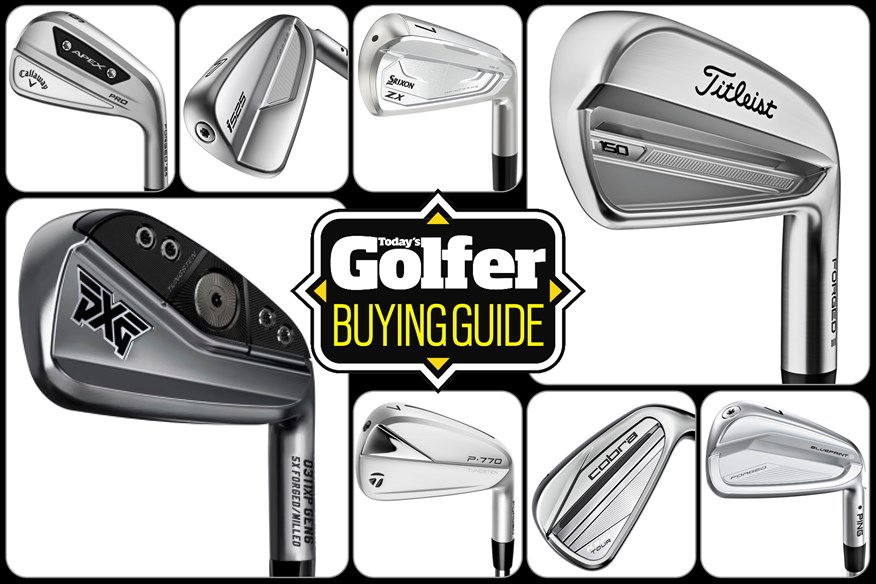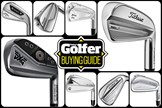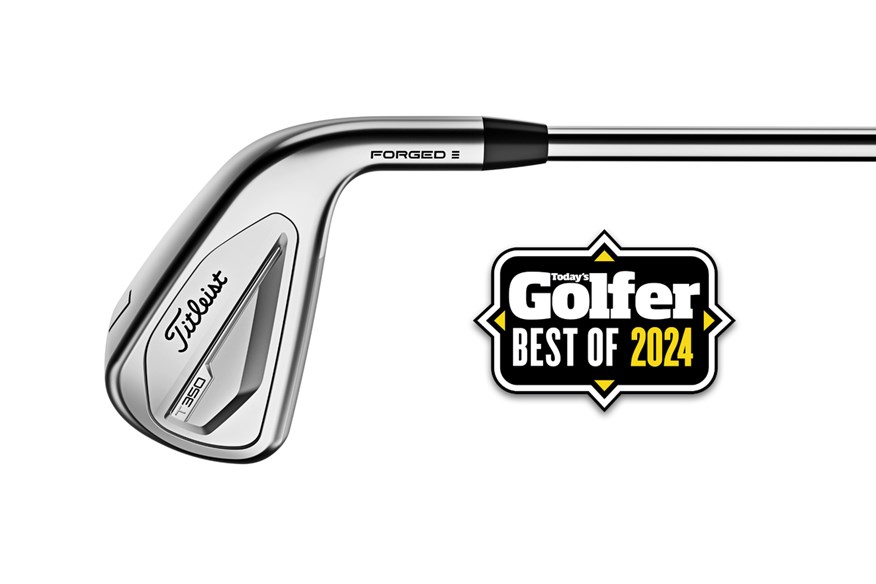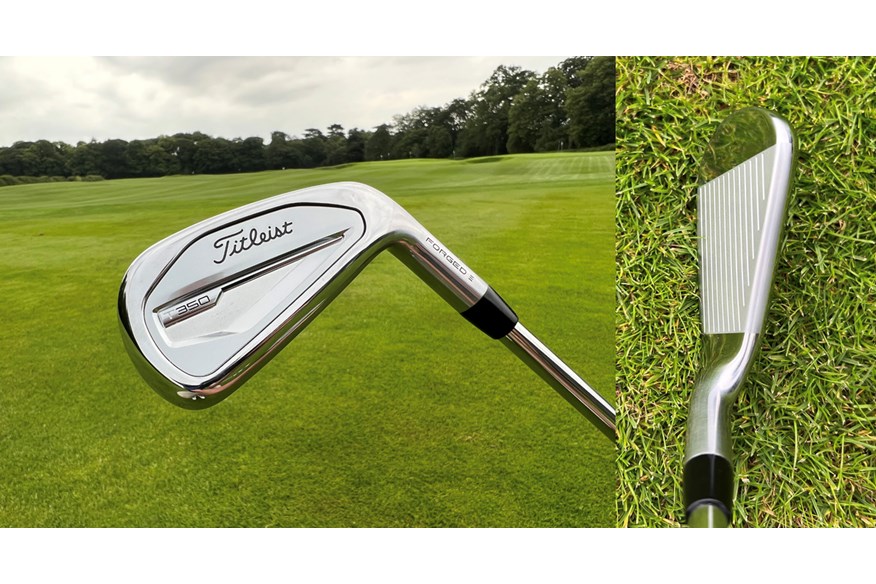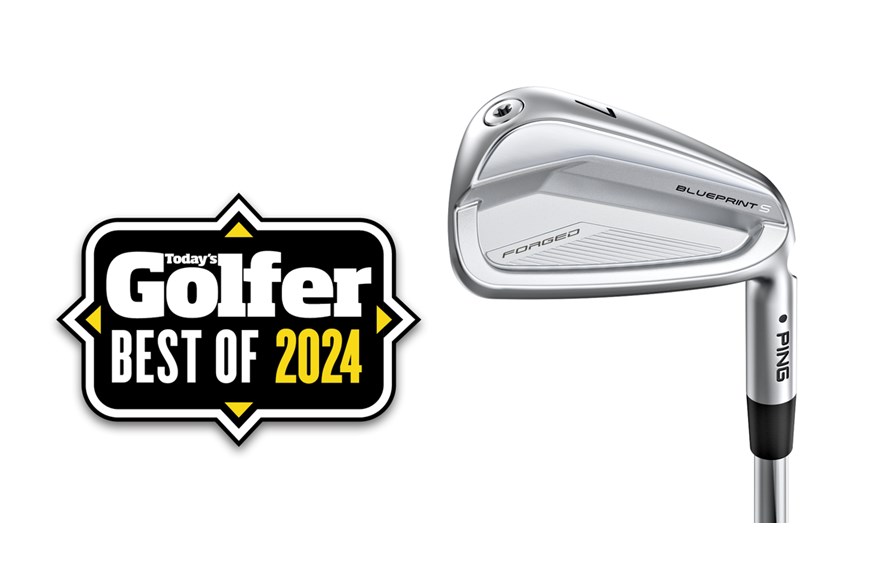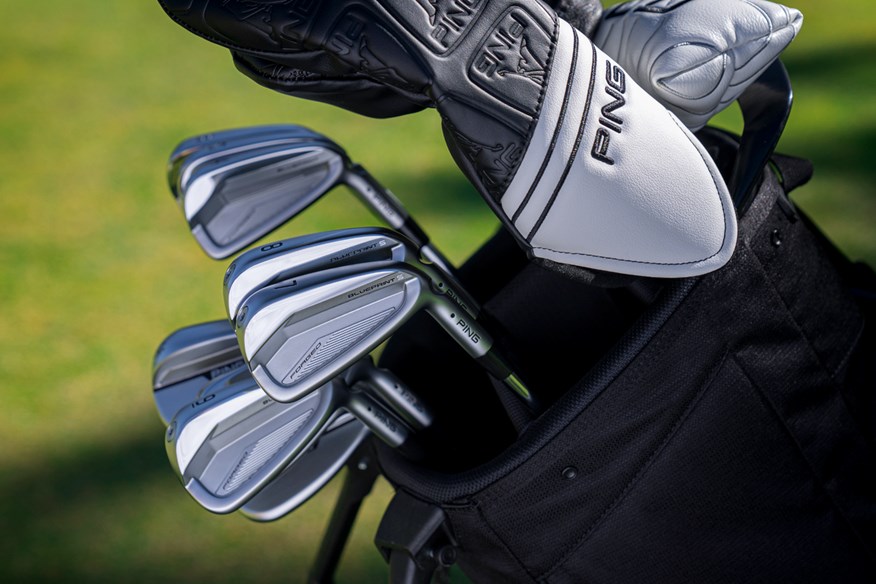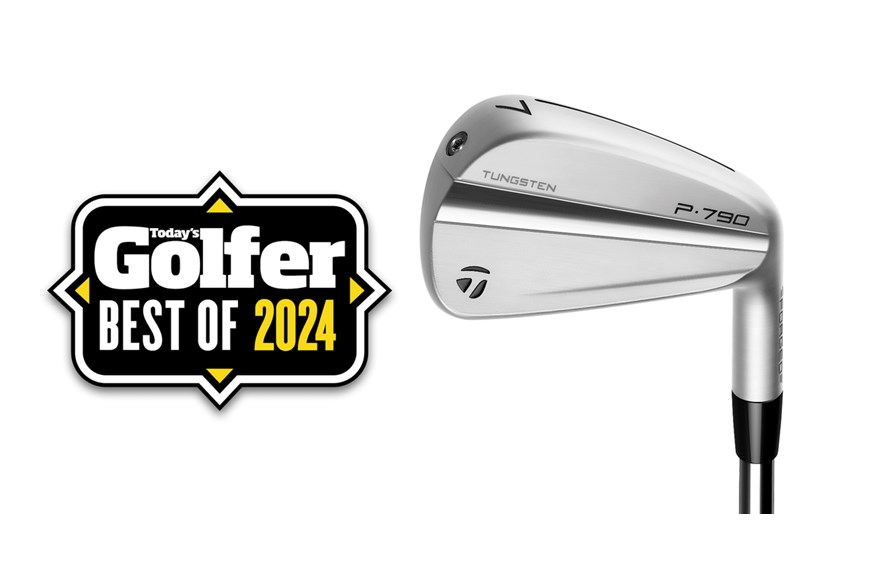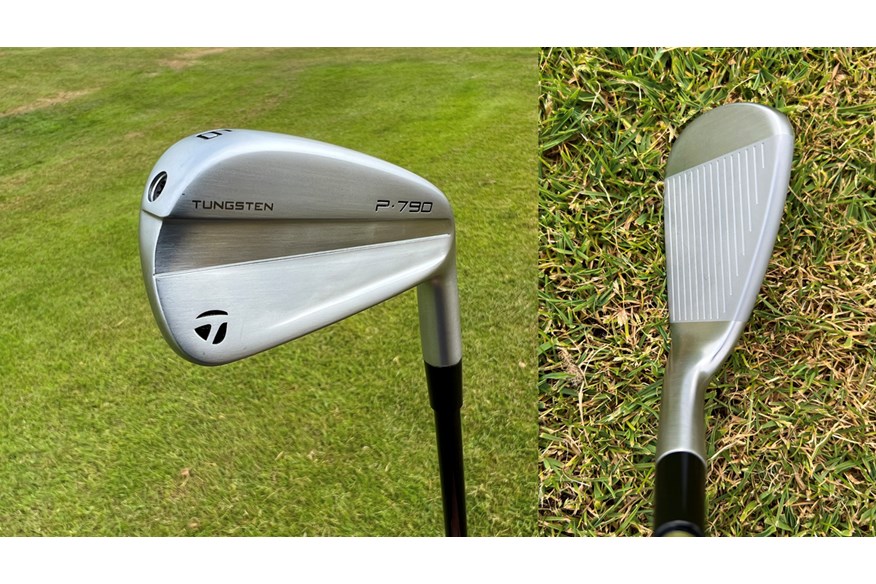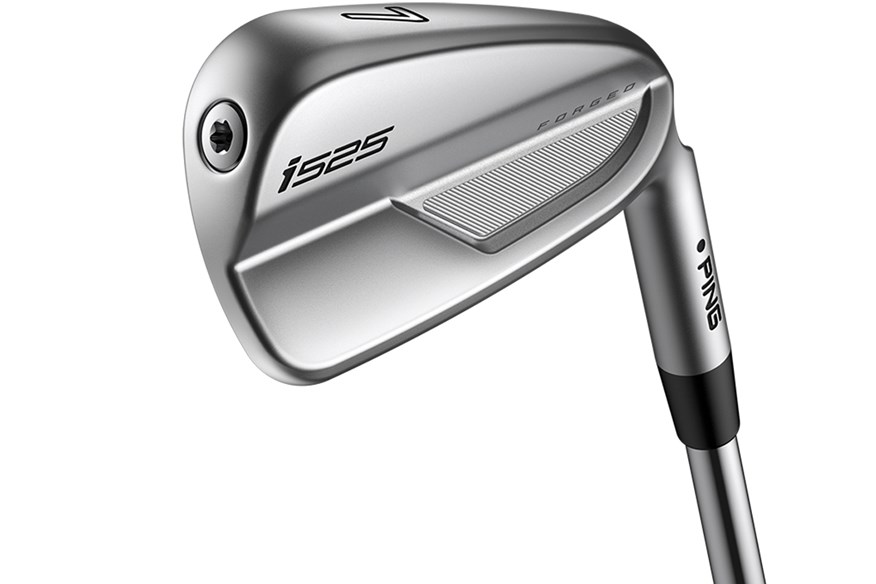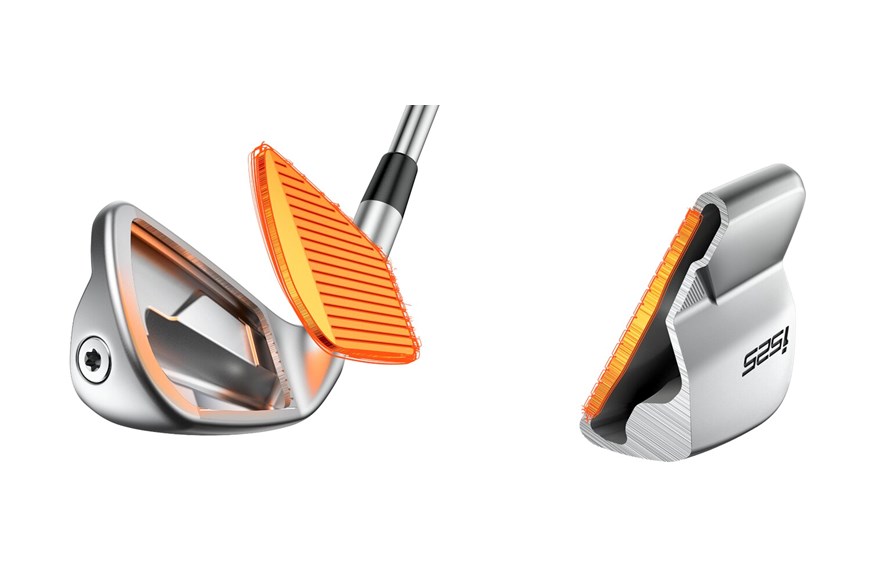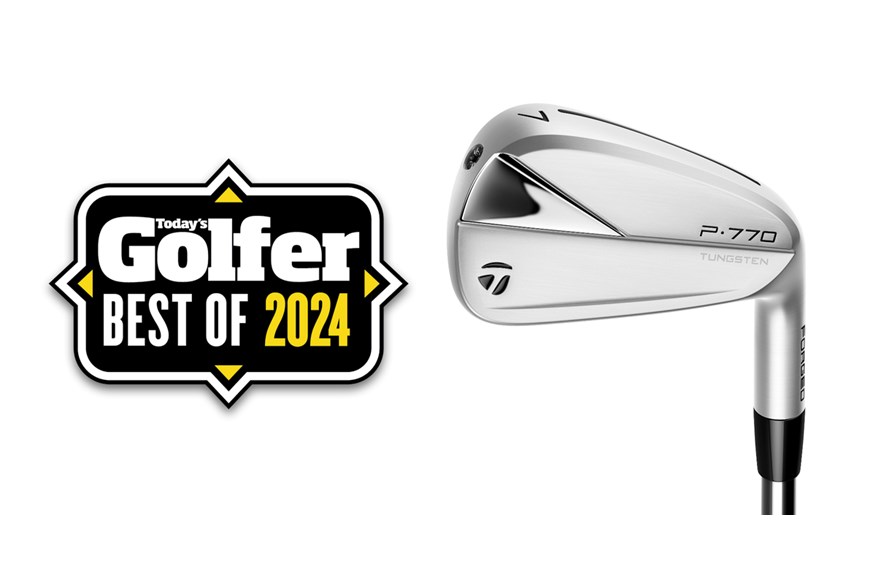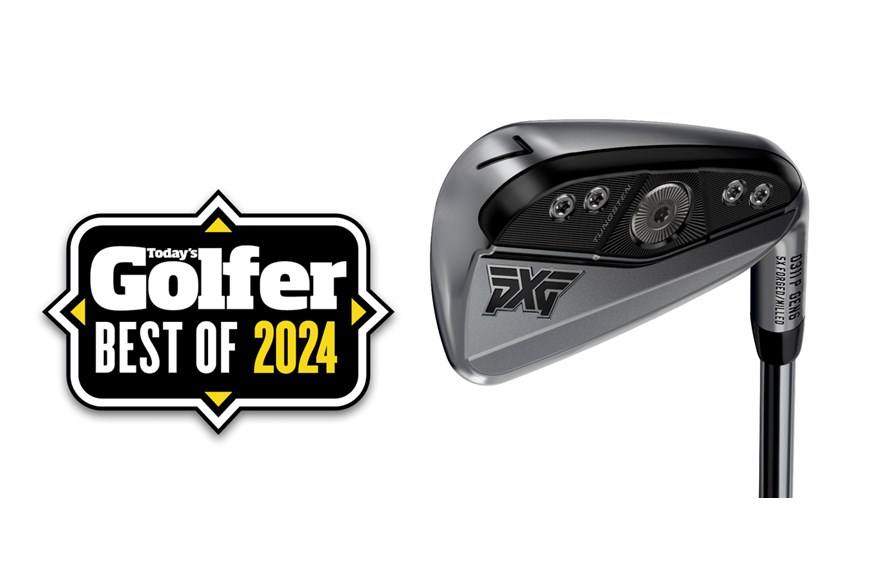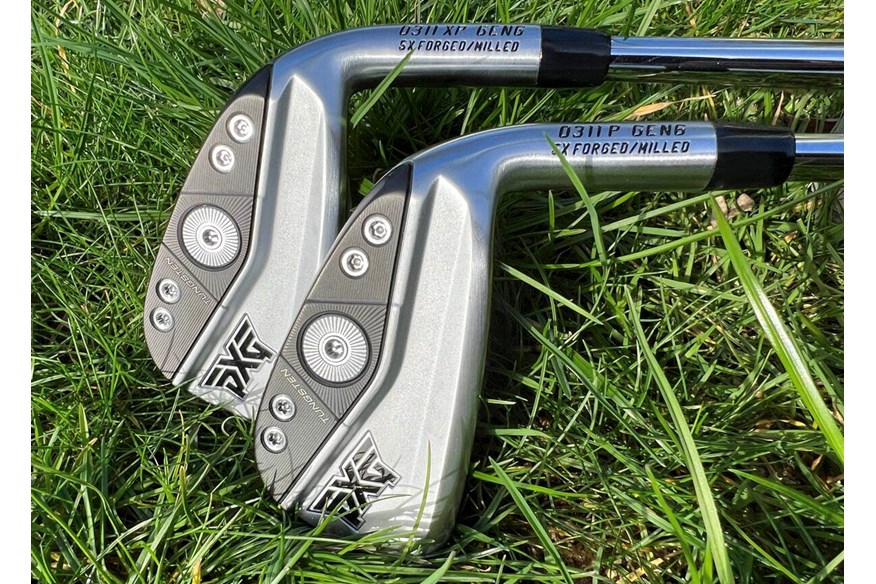Most Forgiving Forged Irons 2025: Feel and forgiveness combined for the best of both worlds
Last updated:
Forged fans needing a boost in the forgiveness department may want to take note of our tried and tested shortlist of the most forgiving forged irons.
Forged irons used to be the sole domain of decent golfers. Many players, especially those who make it to single digits, see a beautiful set of forged irons as the absolute pinnacle of the game and the best irons money can buy.
Traditional forged irons tend to have classic blade profiles with little to no help in terms of launch, distance, or forgiveness, however, many modern forged irons manage to pack in design features that make them a little easier to hit. It’s still the case, though, that the most forgiving irons will be cast models, rather than forged.
Why? Forged irons generally have smaller, more compact heads, while the way they’re stamped into shape makes it difficult to build much game-improving tech into their design. But things have changed drastically in the last decade, spearheaded by PXG’s introduction of hollow forged irons in 2015.
There’s now forged irons aimed at everyone, from Rory McIlroy to 28 handicappers and above. Therefore the timing feels right to shortlist our test pro’s picks of the most forgiving forged irons from our data-informed 2025 iron reviews.
Best At A Glance:
Best for playability: Titleist T350 irons | View Offer
Best forged players’ iron: Ping Blueprint S iron | View Offer
Best for power with forgiveness: Srixon ZX4 MK II irons | View Offer
Best for mid-handicap distance iron: PXG 0311 XP GEN6 irons | View Offer
Best players’ iron for forgiveness: Titleist T150 irons | View Offer
How we tested the most forgiving forged irons
We asked the leading brands to send us their 2024 forged irons in our test Pro Neil Wain’s specs.
We created an indoor test lab at Keele Golf Centre to ensure a controlled environment, which meant we could use premium Titleist Pro V1x golf balls and a Foresight GC Quad launch monitor to create the most reliable data possible. We rejected major misses but recorded how shots launched, span, peaked out, and how far they flew in which direction.
See more about how TG tests golf clubs and other equipment.
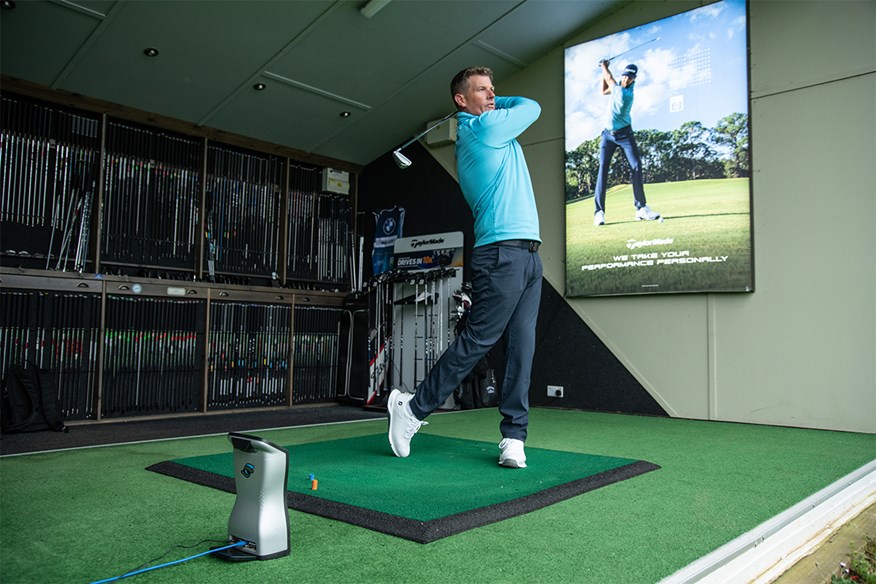
Most Forgiving Forged Irons 2025:
The most forgiving and playable iron set offered by Titleist.
As golfers most of us want to play clubs we like the look of, especially when we’re often forking out over $1K/£1K for a decent set of irons. And if it’s looks you’re after there are not many better looking or more attractive mid-handicap iron options on the market than the T350. I really like the straight top edge, how there isn’t a ton of hosel offset, and how even though the head's bigger than the Titleist T200 it’s still really attractive and easy on the eye when sat behind the ball.
Our test data shows the T350 almost to a tee follows our test averages, which to many might not scream top performer. But throw in a forged face, a ton of tungsten toe weighting to up MOI, and an array of top fitting options (which many in the category can’t compete with), and this model should at least be on mid-handicappers' shortlist to try.
Personally, I’ve played the model since August 2023 and I really like the sound and feel along with how the slightly weaker lofts than some of the competition help flight shots for maximum playability and not just most speed or distance. To take full advantage of what Titleist has to offer ensure you get properly fitted as the brand prides itself on being custom fit leaders.
Read our full Titleist T350 irons review.
Pros
- Premium finish and quality you'd expect from Titleist.
- Lovely sound and feel.
- Workable lofts.
Cons
- Not a standout performer but does everything well.
| Availability | 4-PW, GW, SW |
| Stock shafts | True Temper AMT Red (s), Mitsubishi Tensei Red AM2 (g) |
| 7-Iron loft | 29° |
A stunning iron with all the hallmarks of being a timeless classic
I’ve been testing Ping irons for 15+ years and I can confidently say I’ve never been so excited by any of the brand's previous player-focused models. The Blueprint S has a beautifully simple head shape, gone completely is the ‘boxy’ or longer blade length shape that critics used to put the brand's better player models down for. In my mind, the S is right there alongside the Mizuno Pro 243 and Srixon ZX 7 MK II as one of the very best-shaped players’ irons of the year.
Our test pro loved the forged feel, and sound, preferring the impact sensation to his own set of cast i230’s, a model he’s played for nearly 18 months. Comparing the two sets the pair are almost identical in terms of data bar the four yards carry distance gain in favour of the S. Just remember choosing players’ irons should be more about shape, feel, ball flight, and consistency, so if ball speed and distance creep into your thinking, you really should be looking at players distance irons instead.
In terms of distance, the S carried shots comfortably above our test average (3 yards), with the carry distance drop-off and shot area being just below and above the test averages respectively. That sort of performance says to me the model is well decked out to perform across the board for consistent ball strikers.
Any decision between the S and i230 is likely to come down to how much premium you put on playing forged irons. Out on tour, this is huge, hence why the Blueprint S is seeing such success in the hands of the best players in the world. For decent club golfers price is also likely to be a factor as a 7-piece steel shafted set will set you back £140 more by opting for the forged S. When you’re making your decision don’t forget to factor in the new pocket cavity tech in the S long irons, which will offer up a little more forgiveness.
In my book, the Blueprint S is a stunning set of irons, thanks to being forged and deliciously well shaped they have all the hallmarks of being a timeless classic set, hence why they’re among my five best players’ irons of 2025.
Read our full Ping Blueprint S iron review.
Pros
- This is Ping's first forged cavity back iron in a decade.
- An excellent blend of sound, feel, and forgiveness within the chassis of a tour iron.
- Toe and shaft tip weights cleverly up MOI.
Cons
- Ping forged irons always represent a sizeable investment.
| Availability | 3-PW |
| Stock shaft | True Temper Dynamic Gold 120 |
| 7-iron loft | 33° |
One of the very best mid-handicap distance irons on the market.
Best mid-handicap distance iron
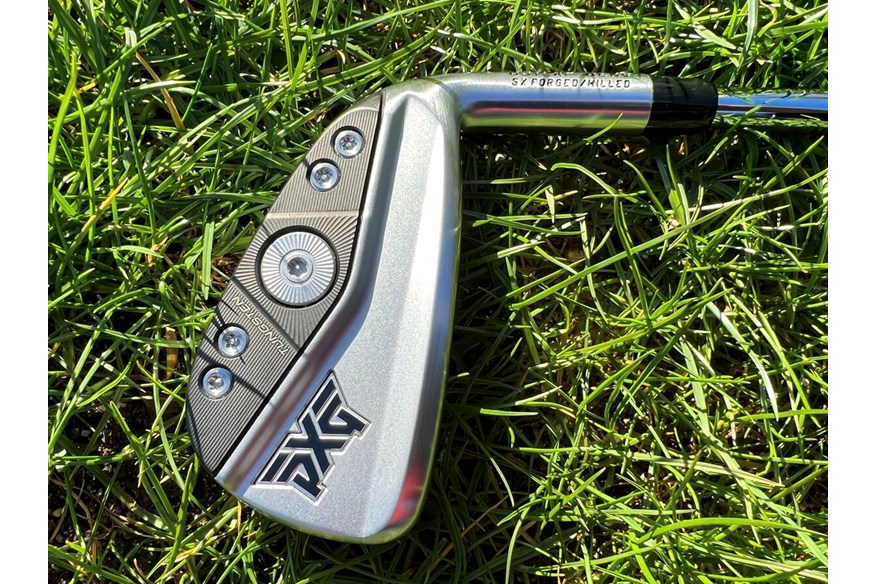

If you’re a distance-focused golfer considering this model, make sure you get properly fit. That way you’ll ensure shots launch, spin, fly, and hit the green at levels that will maximize your scoring potential. In the right hands, and after some vigorous testing with our test pro, I can confidently say this is still one of the very best Mid-Handicap Distance irons on the market.
Read our full PXG 0311 XP GEN6 irons review.
Pros
- We love how golfers can go lighter or heavier in weight and longer or shorter in shaft length without moving the centre of gravity location.
- One of the best-looking and sounding clubs out there with an exceptional feel.
- PXG fitting experiences are second to none.
Cons
- Requires a minimum level of club speed
| 7-iron loft | 27° |
| Stock shaft | UST Recoil dart 75g, Project X Cypher 60i, Mitsubishi MMT 70/80g |
A game-changing combination for the game improvement market.
Best for power with forgivenss
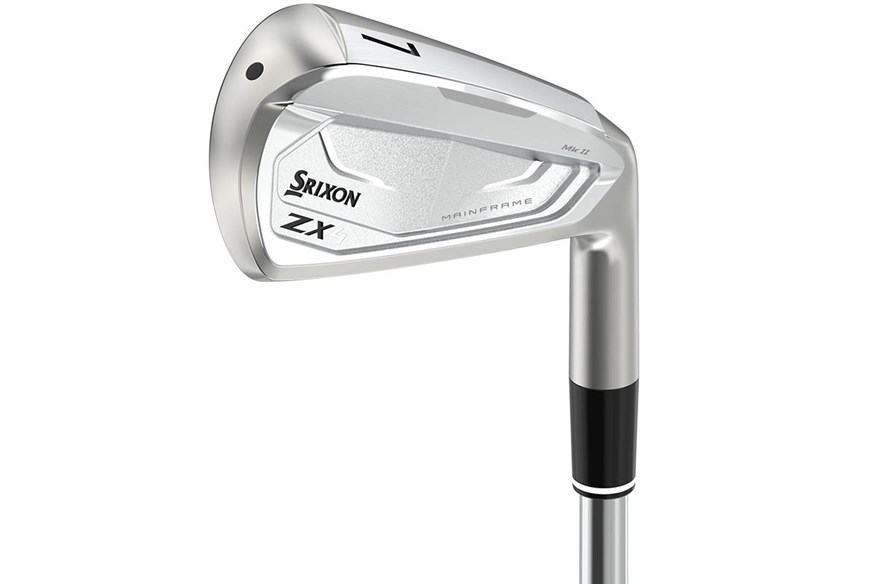

In the mid-handicap iron category, I love the ZX4 Mk II for its simple elegance and straight-line beauty, it has a look that lots of golfers will appreciate sat behind the ball at address. Each head is not overly offset and the topline thicknesses across the whole ZX family are closely linked, which should encourage you to create your own personal combo set of two or more models. Like TaylorMade's P790, only the face is forged here, but the feel is so good you'd be hard-pushed to distinguish it from a fully forged golf iron.
Throw in all that good cosmetic stuff, with the model being one of our test pro’s favorite models plus an above-average performance for ball speed and carry distance and you’ve got a very powerful and desirable iron choice, even though most of the hottest competition is a year younger.
Read our full Srixon ZX4 irons review.
Pros
- Very powerful
- Minimum ball speed drop-off
- Plenty of forgiveness
Cons
- Not the most confidence-inspiring
| Availability | 4-LW |
| 7-iron loft | 28.5° |
| Stock shaft | Nippon N.S. Pro 950GH Neo (s), Diamana OEM (g) |
Players’ Distance Irons just don’t come any better.
There’s a real beauty in how the model from day one has been designed to be a timeless classic. The idea means there aren’t huge changes from generation to generation and if you happen to own a set of the original 2017 P790s they’re just as good today as what they were when golfers went nuts for the marquee seven years ago.
The untrained eye will likely look at our data charts and wonder why thanks to being in a ‘distance category’ the P790 which posted almost bang-on average carry warrants such praise. Let me explain. At 30.5° in the 7-iron the P790 is nowhere near the strongest loft players distance iron we tested this year, in fact, it’s 2° weaker than the Mizuno JPX923 Hot Metal Pro that also produced the fastest ball speed and longest carry distance. But look more closely and you’ll see how the P790 produced a ball speed above our test average while flying shots higher, spinning more and hitting the green at a steeper angle so shots will stop when they hit the dancefloor.
When we put the P790's aesthetics, feel, and sound into the mix along with a tied 2nd performance for carry distance drop-off and a shot area 45.4% tighter than our test average (2nd best) you really can’t question this model's credentials. Players’ Distance Irons just don’t come any better.
Read our full TaylorMade P790 irons review.
Pros
- Having the option of trying stronger and weaker lofts during a fitting is genius thinking.
- The players' distance iron that has more proven pedigree than all of its competitors.
- A slightly lighter regular flex shaft opens the model up to more average swing speed players.
Cons
- A truly difficult iron to fault.
An excellent option for high-level golfers seeking added forgiveness.
Most forgiving players' iron
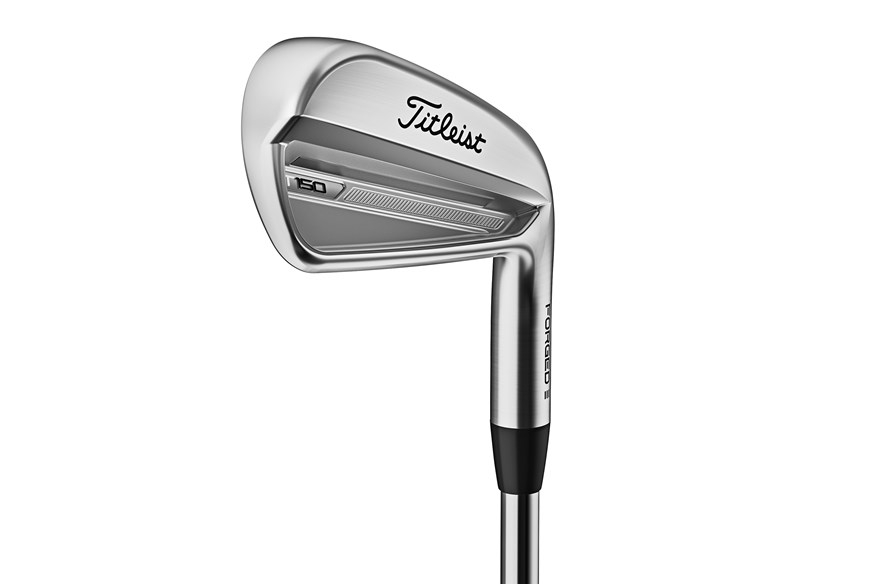

For our test pro, the T150 produced 4.5mph more ball speed than the T100. It launched and flighted shots higher than our test average and despite the stronger loft shots hit the green at a steeper angle too. Performance which Titleist will say comes from the head now having its own identity (with a wider sole etc) rather than just being a 2° stronger version of the T100. Throw in 8 yards more carry distance with a 7-iron and very few club golfers in their right mind will feel the T100 is their better option.
That sort of performance puts the T150 among our top 10 performing players’ irons of 2025. If you find yourself drawn to a set you’ll be delighted to hear at just 4 yards the model clocked up our second smallest carry distance drop-off and third smallest shot area of the entire 25 model line-up. Impressive stuff.
Read our full Titleist T150 irons review.
Pros
- A top performer for dispersion and carry distance drop-off.
- Can be combined with the T100s for a combo set with a blend of distance and control.
- Slightly more powerful and confidence-inspiring than the T100.
Cons
- Sacrifices a touch of precision for ball speed.
| Availability | 4-PW |
| Stock shaft | True Temper Project X LZ (Low Launch, Low Spin steel) or Mitsubishi Tensei White AM2 (Low Launch, Low Spin graphite) |
| 7-iron loft | 32° |
A timeless part-forged classic that will still appeal to high-level players.
Best for timeless looks
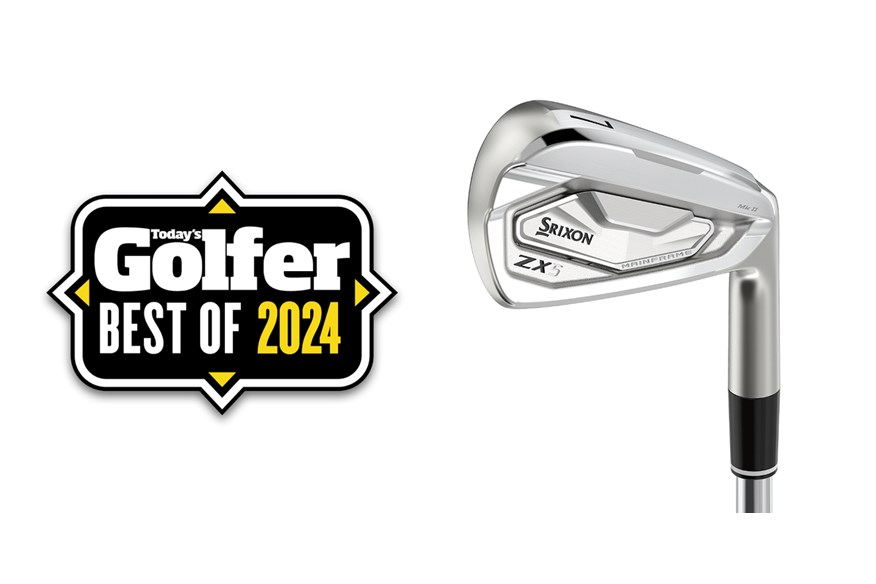

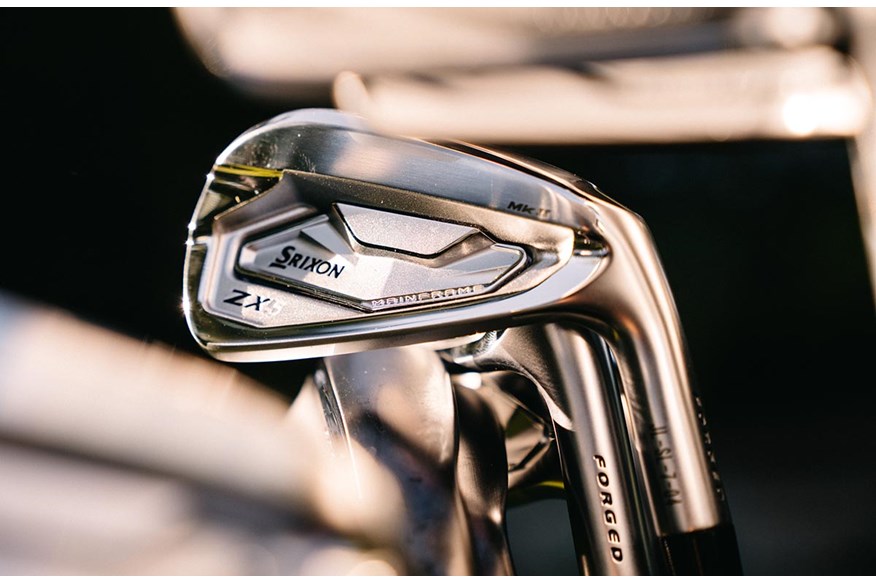
On paper as solid as the model was, there’s no hiding it produced a fraction less spin than our test average. Now that need not be a major issue, so long as you have reasonable levels of speed as this is one of the weakest lofted models in the distance category.
Our data spells out how shots launched and flew a little higher and hit the green at a steeper angle than average so it’s not like shots cannon off the springy face like low-spin bullets. Not too many irons are award winners here at TG in their second year but I love the ZX’s combination of forged head with a thin, fast, and springy face for excellent speed and distance.
The model is a great marriage, creating one of the very best timeless classic players’ distance irons available, so golfers don’t need to worry about the model feeling out of date next season. The ability to buy individual irons and combo any of Srixon’s three ZX models together still makes the ZX a brilliant buy in 2025.
Read our full Srixon ZX5 MKII irons review.
Pros
- Classic, understated, and timeless looks.
- Available to mix and match with any of Srixon's ZX models.
- Still winning awards in its second year of play.
Cons
- Lower spinning than our test average.
| Availability | 3-PW |
| Stock shafts | KBS Tour Lite (s) UST Recoil Dart (g) |
| 7-iron loft | 31° |
Highly playable cast and forged design with the feel of a proper players' iron.
Even though the model is soon to disappear from pro-shop shelves I love the simple, classy styling, and how the focus has been poured on eliminating the no-spin knuckleball that some golfers experience with hollow body fast face irons. Our test pro also loved how the extra face grooves give the model a proper players' iron feel, a feature that doesn’t come with every iron in the category.
For the second year in a row launch angle, backspin, shot height, and descent angle were all spot on our test averages. Carry distance was a fraction lower, where carry distance drop-off and shot area were significantly tighter, which has to say this is a very playable model in the Players’ Distance Iron category. With Ping soon to reveal the i525’s replacement I’d seriously advise golfers not to invest in this model right now, not until we’ve seen what’s next in line from the i family. If the i530 is anything like its older sibling I’m confident it will be a much sought-after top performer within this category.
Read our full Ping i525 irons review.
Pros
- One of the longest players' distance irons.
- Beautiful; looks like a players' irons.
- Loft options allow you to make clubs stronger or weaker than standard.
Cons
- Genuinely hard to find fault but they're not the cheapest. Seven clubs (4-PW) will set you back £1,260 for steel.
| Availability | 3-GW |
| Stock shaft | Project X 10 or Ping AWT 2.0 (s), Ping Alta CB Slate, Alta Distanza Black 40 or UST Recoil (g) |
| 7-iron loft | 30.5° |
Tour-level precision with a multi-material forged construction.
Best for low ball flights
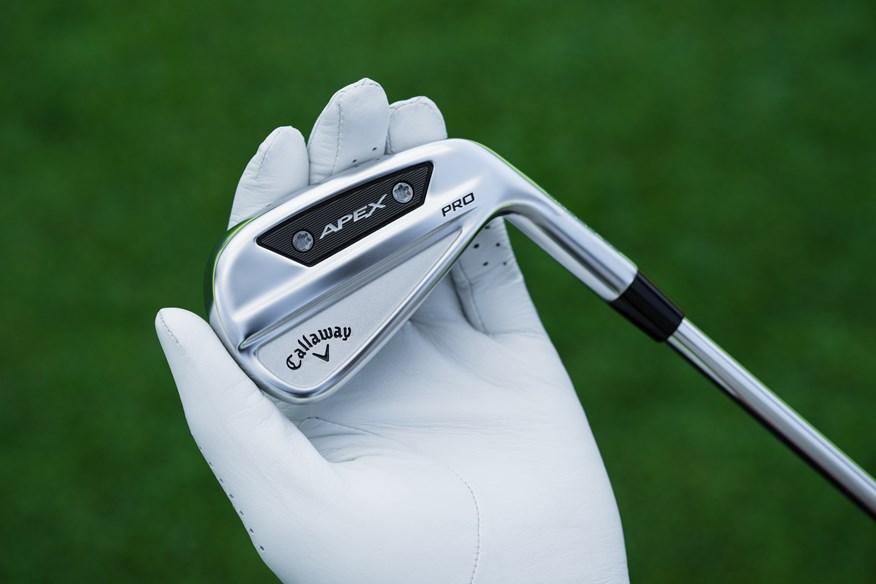

Expect a beautiful head shape, cracking satin finish as well as a very pleasing impact sound and feel, even though the Pro didn’t quite nudge its way into the higher echelons of our top-performing players’ irons this year. My thinking comes down to a significantly lower ball flight and shallower descent angle than the major competition and our test averages. Typically fast-face, hollow-body irons launch higher and spin less so unless you specifically want to target lower ball flight I feel there are slightly better tech-focused players’ irons like the TaylorMade P770 out there.
If lowering ball flight is your desire you’ll be pleased to hear the model produced an above-average ball speed, bang-on-average carry distance, and a smaller carry distance drop-off and shot area than the majority of the 2025 players’ irons we hit. Bingo!
Read our full Callaway Apex 24 Pro review.
Pros
- Designed with input from the world's best players
- Incredible feel
- Use the best material
Cons
- More expensive than Apex '21
A stunning iron with more playability than some of its competitors.
Best for consistent ball strikers
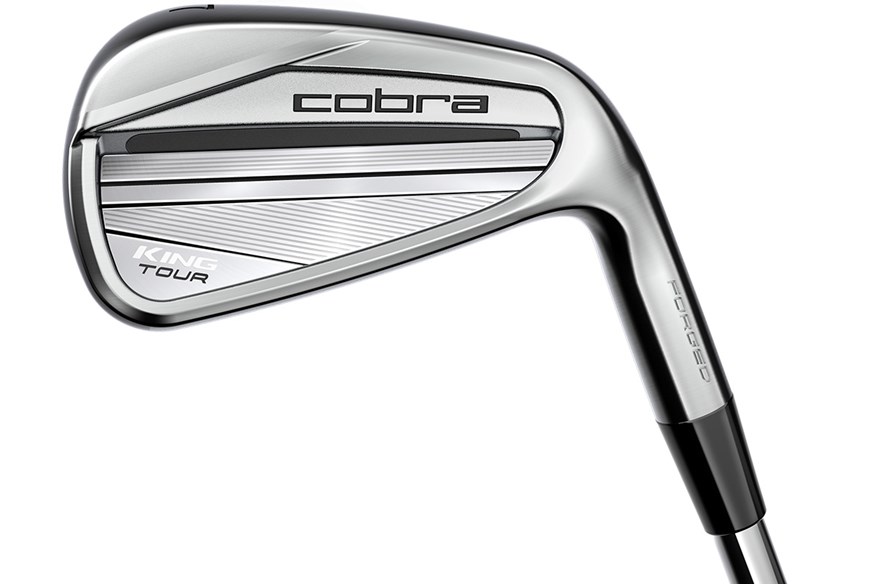

The five-times forged heads feel super soft. There’s a tiny bit of tech built-in with variable depth milled pockets in the shallow cavity backs, which add a fraction more playability on the long irons and increased flight control on the scoring clubs. Like any good players’ iron, the head shape is really attractive, there are no awkward areas that unduly draw the eye, making this an understated model for decent players who are happy to let their golf do the talking.
Data tends to be less important within this category, as decisions are more often made on subjective hunches. The Tour does itself no harm though by producing an above average carry distance for the category, while other metrics stick stubbornly around the average mark.
As the King Tour enters its second year I feel it’s still got a lot to offer as Cobra is now a proper player within the forged iron market. The Tour sits alongside the King MB blade and tour-level King CB plus there’s a hollow body Forged Tec and Forged Tec X, all of which can be dialed in individually to create your own perfect combo set. If you’re considering forged irons in 2025 Cobra’s cracking line-up deserves to be checked out.
Read our full Cobra King Tour irons review.
Pros
- An understated and attractively shaped players' iron.
- A solid all round performance package.
- Can mix and match with other models for a Cobra combo set.
Cons
- Doesn't excel in one particular area.
| Availability | 4-PW (3-iron and GW available via custom-fitting order) |
| Stock shaft | Stiff or regular flex steel KBS $-Taper 120 |
| 7-iron loft | 33° |
A modern forged-face beauty that stands up to the best on offer in 2025.
In previous years the P770 has been tough to categorize, but thanks to its players' profile (and weak 33° 7-iron loft), which TaylorMade crams with ball speed and forgiveness-enhancing tech, this is clearly a modern-day players’ iron. And if you’re happy to accept tech within the players’ iron arena the P770 is just about as good as they come.
For those who question what hollow body constructions and thin fast faces bring to the party, comparing the P770 to TaylorMade’s P7MC gives a great explanation of what tech does for the category. Thanks to tungsten weighting inside and a hollow body construction the P770 has a slightly higher MOI. Which is good for golfers who hit lots of straight shots, but less attractive for golfers who like shaping shots onto a flag.
In our 2024 test, the P770 produced a ball speed 2.8 mph faster than the 1° weaker loft P7MC. Thanks to the hollow body and thin face shots launched with a fraction less spin, yet peaked out higher, and hit the green at a steeper angle (0.4deg), while adding 6 yards of additional 7-iron carry distance. In my book, those are all seriously impressive stats that will help decent club golfers score a fraction lower, more often. Whichever way you want to look at it the P770 is a modern beauty, and even if they are due to be replaced later in the year I still regard them as one of the best players’ irons of 2025.
Read our full TaylorMade P770 irons review.
Pros
- Good levels of forgiveness for a player's iron.
- High ball flight apex and steep descent angles.
- Packed with ball speed and forgiveness-enhancing tech.
Cons
- Not ideal for those who like to shape shots.
| Availability | 3-PW |
| Stock shaft | KBS Tour |
| 7-iron loft | 33° |
A super-playable part-forged iron within the players' distance category.
The 0311 iron family has won a stack of awards previously here at TG and the most recent GEN6 P is just about the best the company has to offer in the hollow body iron arena. Nobody I’ve ever spoken to doesn’t like the look or shape of PXG irons, it’s something designer/engineer Mike Nicolette has worked on tirelessly and absolutely nailed from day one. That profile shape is very slightly longer than some (which helps forgiveness), there’s a lovely crisp toe shape and beautifully clean blend into the hosel, which means the P is open to being used by quite a wide audience of players.
In terms of performance, the P stuck stubbornly on our test averages for launch angle, backspin, shot height, and descent angle, but was faster, longer and produced a tighter carry distance drop-off and shot area. To me that says the model will be super playable out on the golf course versus some of the other models in this category.
The Players’ Distance Iron arena is incredibly crowded, there are lots of good options here. I’d choose PXG not only for the cracking sound and feel of their P offering, which is made possible thanks to the brand's dedication to filling their models with lightweight polymer but also because the company has developed a second-to-none fitting system that allows golfers to go lighter, heavier, longer or shorter in their irons without the need to move the centre of gravity. Yes, you’ll need a fitting to access this type of set-up but in my book, that’s time very well invested in helping get more from your iron play this year.
Read our full PXG 0311 GEN6 P irons review.
Pros
- We love how golfers can go lighter or heavier in weight and longer or shorter in shaft length without moving the center of gravity location.
- The 0311 GEN6 P and XP are some of the best looking, feeling, and sounding players' distance and mid-handicap irons available.
- PXG fitting experiences are second to none.
Cons
- Keep an eye on PXG's website, prices are prone to fluctuate and fall on a regular basis.
| Availability | 3-PW |
| Stock shafts | True Temper Elevate Tour and Elevate MP 95g, KBS Tour Lite, Nippon Modus Pro 125 |
| 7-iron loft | 30° |
Also of interest?
If you’re not quite sold on the idea of a forged or part-forged construction but long for a forged ‘feel’ combined with game improvement forgiveness, you may be interested in what’s going on over at Cobra. Read everything you need to know about the Cobra 3D Printed Limited iron described as “the most significant technological advancement to happen to the category in the past 20 years and offer a look into the future of golf club design and performance.”
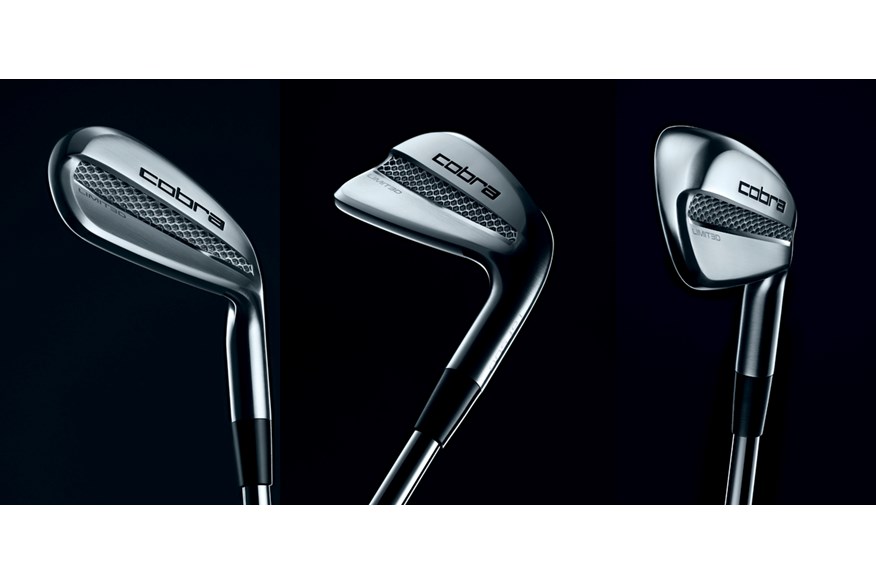
Most Forgiving Forged Irons 2025: Buying Guide
If you are considering upgrading your bag with a new set of forgiveness-boosting forged irons then here are some key considerations worth keeping in mind:
Ability
While this guide has proved today’s forged offerings are not exclusively for high-level players, some models will naturally suit consistent ball strikers and high-speed players more than others. We recommend being honest with yourself when it comes to assessing your ball-striking ability so you can best identify how much added support you require before committing to a significant purchase such as a set of irons.
Distance
Forged irons are typically weighted toward workability and control as opposed to distance. While this guide highlights some excellent examples of forged irons that combine lots of competing interests, it’s worth remembering that you will likely have to make a compromise somewhere. And if distance is something high on your requirements, ensure you go for a model that packs in a bit more distance-boosting technology such as the best players’ distance irons.
Feel
The feel of a golf shot is integral, allowing you to learn from the interaction experienced between the ball and the club at impact. Feel is determined by the vibrations traveling up the shaft of the club, as well as the sound of the impact. Every iron will have its own unique ‘feel’, and it’s therefore imperative to make sure you select a model that encourages this feedback to best control ball flights and ultimately help you to shoot lower scores. A forged iron, even with boosted technology, should still provide above-average levels of feel.
Workability
The ability to draw and fade a ball into awkward pins is a key skill for better players, and forged irons are designed to enhance this shot-shaping ability. Consider your natural ball flight and which shot shape you struggle with most before heading to the range with a few different options to see which model provides you with the workability you desire.
Custom fitting
Often overlooked, but dialing in your optimal set-up through a custom fitting session will likely be of more benefit than the slight performance edge you hope to achieve by selecting one set of irons over another. If you’re not sure where to start, we suggest nipping down to your club Pro, or nearest golf retailer to explore the shaft, flex, lie angle, and a whole host of other variables that will help you extract the most value from your chosen model.
Budget
As with many things in the golf world, prices for forged irons typically come at a premium. Value for money is subjective and therefore you should spend however much you feel comfortable with, be one of the powerhouse brands, or one with a more competitive price point.
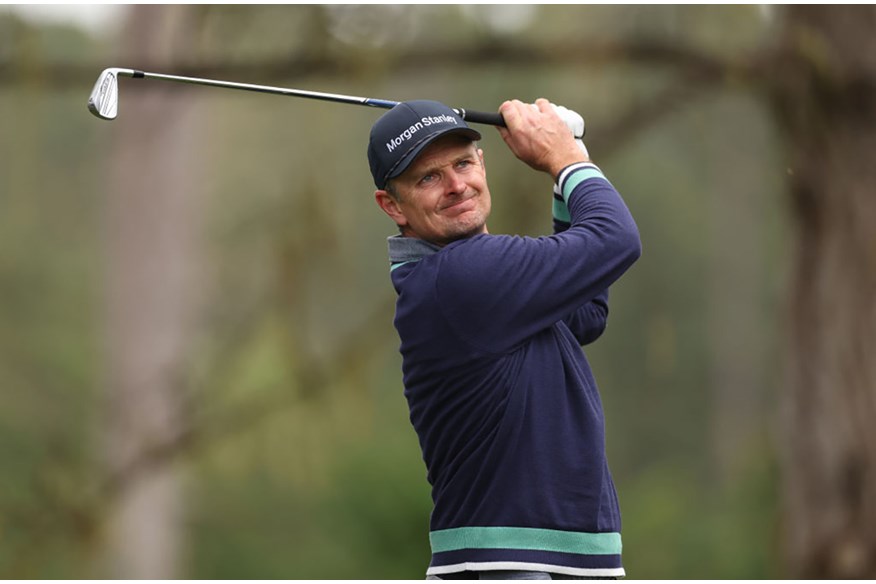
Most Forgiving Forged Irons 2025: FAQs
What defines a forged golf iron?
Iron heads are produced in one of two ways: by being cast, or being forged.
Forged: A forged head involves taking a single piece of metal and hammering it into the desired shape. It typically involves softer materials and a more labor-intensive process, which can push up prices. Typically, forged clubs were seen as offering the ultimate in feel, although manufacturers have become increasingly adept at making cast clubs feel almost as good as their forged counterparts.
Cast: Casting is a more commonly used process and involves pouring molten metal into a mold to harden into the required shape as it sets. This process allows more versatility in design and is therefore used in the majority of non-bladed irons.
Who are forged irons for?
Not so long ago forged irons were the realm of decent players only. There’s now a model out there for everyone, regardless of your ability or handicap. Manufacturers are bringing the same high-spec equipment to high-handicappers as they are their tour staff. It’s the result we really wanted from this test. Remember, mixed and combo sets are a great idea, offering the best of both worlds with more forgiving long and mid irons, and more compact scoring clubs.
What golf irons are the most forgiving?
The most forgiving golf irons will produce the lowest dispersion numbers in addition to protecting carry distance on off-center strikes. These golf clubs will typically have the highest resistance to twisting on impact, otherwise known as Moment of Inertia (MOI). Today’s Golfer has found the Callaway Paradym Ai-Smoke HL, TaylorMade Stealth HD, and Cobra Air X, to be amongst the most forgiving models in recent years.
What irons do Tiger Woods and Rory McIlroy use?
Both Tiger and Rory game TaylorMade irons. Tiger uses TaylorMade P7TW irons (4-PW) with True Temper Dynamic Golf Tour Issue X100 shafts, whereas Rory opts for the brands’ P760 4-iron and P730 Rors Proto irons (5-9) with Project X Rifle 7.0 shafts. Bear in mind, however, that these are two of the best ball strikers of all time, and you should consider which TaylorMade iron is best for you before splashing the cash on your idol’s exact model.
SUBSCRIBE TO TODAY’S GOLFER: Print and Digital access, discounts and rewards!
About the author

Simon Daddow – Today’s Golfer Equipment Editor
Having tested and played more than 10,000 clubs in his life, what Simon doesn’t know about golf clubs isn’t worth knowing.
He spent a large part of his career as a golf club maker and product development manager, and has worked in the golf industry for more than 30 years. He joined EMAP Active (now Bauer Media) as Equipment Editor in 2006 and has worked for both Today’s Golfer and Golf World.
You can contact Simon via email and follow him on Twitter for loads more golf equipment insight.
